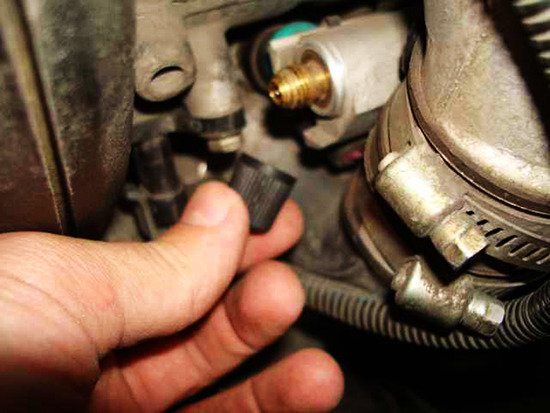
If the engine is three, fuel consumption has increased or there is a problem with idle speed, one of the recommendations for the car owners is to check the pressure in the fuel rail because it can influence the stability of the engine. Of course, the simplest option is to go to the service and trust the test of pressure in the fuel rail. However, this is not really such a complicated procedure, so the pressure in the ramp you can easily test your hands. How to measure the pressure in the fuel rail with your hands
How to measure the pressure in the fuel rail with your hands
To measure the pressure in the fuel rail it is possible to buy a special device-it is sold in any auto shop. It is possible to simply take a manometer with a range of 7 to 10 atmoss (if the range is larger, the accuracy of the measurements may be insufficient) and make the instrument independent. To test the pressure in the fuel rail, in addition to the pressure gauge, you will need a hose with an internal diameter of 9 mm, a bit of a plumbing and a fixation. The pressure gauge is inserted into one end of the hose, the connection shall be sealed by the sanitary liners and shall be tightly tightened with the handle. After that, it is possible to proceed directly to the verification of the pressure in the fuel rail:
1. Find the fuse of the fuel pressure and twist it, and then use the gold to spin the nipple.

2. Tire the cloth and empty packagings, as the fuel can be sprayed under pressure. Make sure that the fuel is not caught in the eye or face.
3. Attach the instrument (manually purchased or done) to the connection and measure the pressure in the fuel rail.
In order for the measurements to be as complete as possible, they should be produced in four modes: after ignition on, idle, after the reset of the fuel pressure regulator, when the system is repressursed.
- after ignition of the engine
- at idle,
- after the reset of the fuel pressure regulator,
- when the system is redrawn.
Each car has a different normal pressure in the fuel rail, but the approximate results are as follows: After the ignition of the ignition is about 3 atmosphere, at idle, about 2.5 vials, after the fuel pressure controller has been reset, about 3.3 atmosphere, when the system is reclued with the system, about 7 atmoss.
- after ignition of the engine is about 3 atmoss,
- at idle, about 2.5 atmosphes,
- after the reset of the fuel pressure regulator pipe-about 3.3 atmoss,
- when the system is repressed, the system is about 7 atmoss.
In addition, by checking the pressure in the fuel rail, it is also possible to verify the operation of the fuel pump. To do this, it is necessary to keep gas up, lift up to approximately 3000 rpm, and monitor the manometer reading. If the pressure increases slowly, then the gas pump is not right.
Some car owners wonder whether the pressure in the fuel rail can be checked without a pressure gauge or a special instrument. You can, but this is a very rough check. To do this, it is only necessary to unroll the supply fuel line and supply food to the pump. If the pressure in the ramp is normal, approximately 1.5 litres of fuel per minute shall be applied.









